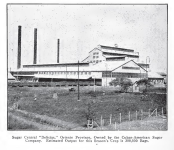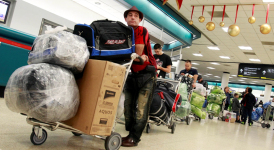It seems that you like garbage, since you keep coming back like the bee to the honey.
In Cuba people earn about $18 dollars a month. They get a miserable government rations that lasts them about ten days. You can certainly buy food in communist Cuba, but you pay just about the same amount of money that a free person would pay in the USA. A hamburger in Cuba cost $3. How can a person making $18 a month at a government job afford a hamburger?
To be fair (and I am not pro-Cuban, but right should be right) before Fidel Castro and the revolution, 95 % of the people where starving big time. They had no access to electricity. Corruption was double the one in Russia of today. Unemployeement enourmous, those who had jobs had to except levels for wages equal to those in 1910. Demonstrating students and workers where systematically killed. Trade union premises were occupied. Opposition( mostly communists) and union leaders where systematically murdered.
The rest (5%) living in luxury though... The corruption was enormous much worse than the one in Russia of today. Infront of the 1952 elections, the Orthodox Party (in which Fidel Castro was a member) was on its way to a certain victory. But the election never took place. With US support, Batista staged a military coup in March 1952.
And yes, the US has since the occupation (1902) very much been the reason for Cubas demise and developement. US companies looted Cuba, within the economic agreements concluded between the United States and its
puppet regimes on Cuba (
the 5% that had good living standards, or in more modern terms, the Cuban oligarchs...)). In the 1920s, the United States controlled almost the entire Cuban economy. Companies such as United Fruit heavily exploited the island for export crops, sugar, tobacco and bananas. The distortion of the country's economy was driven to such an extent that, despite agriculture being the main industry, large quantities of food had to be imported. USA monopolies not only owned sugar mills, oil refineries, banks, small industries, telephone and electric grids, but the US embassy was also the one that effectively controlled the court, government and president. This neo-colonialism differs from the old colonialism mainly in that the exploited country, Cuba, itself was forced to bear the costs of the oppressive apparatus and staff it. For Cuba, this meant that the countryside was underdeveloped, and that prostitution and gambling flourished in Havana and elsewhere where crime, mafia rule and racial discrimination thrived.
So to all the 5% relatives, who now live in the US where they fled during the revolution, and who still justify the impoverishment, exploitation and theft from the Cuban people and think they should be entitled to the loot they didn't manage to take with them on the run to USA,
I say Fxxx you…claiming the loots of murderers and bandits

